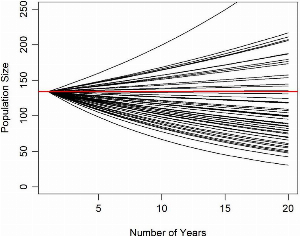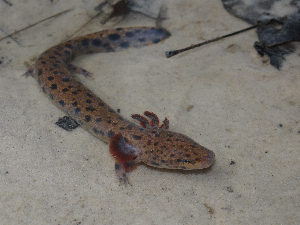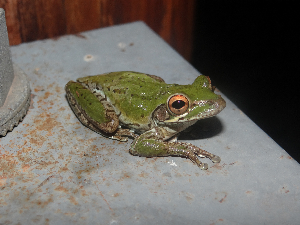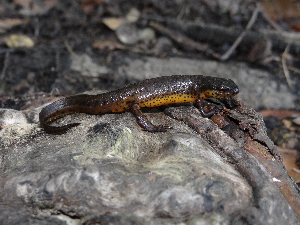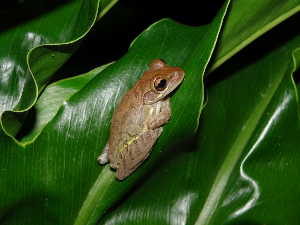Search ARMI Database
Search term(s)
Contribution Number
Search Results
65 record(s) found.
Data Release Mercury concentrations in amphibian tissues across the United States, 2016-2021
Papers & Reports Thirteen Years of Turtle Capture-Mark-Recapture in a Small Urban Pond Complex in Louisiana, USA
Papers & Reports Broad-scale Assessment of Methylmercury in Adult Amphibians
Papers & Reports Broad-scale assessment of methylmercury in adult amphibians
Papers & Reports Range-Wide Population Projections for The Northern Red-Bellied Cooter (Pseudemys rubriventris)
Papers & Reports Evaluating the effect of expert elicitation techniques on population status assessment in the face of large uncertainty
Data Release Data from a road ecology study of Spotted Salamanders along the Natchez Trace Parkway, Mississippi, in 2012-2013
Data Release Data from a turtle trapping effort targeting alligator snapping turtles (Macrochelys temminckii) in the Atchafalaya Basin beginning in 2019
Data Release Data from a 2019 occupancy survey of alligator snapping turtles, Macrochelys temminckii, in south-central Louisiana
Papers & Reports Abundance of Gulf Coast Waterdogs (Necturus beyeri) along Bayou Lacombe, Saint Tammany Parish, Louisiana
Papers & Reports Widespread Ranavirus and Perkinsea infections in Cuban Treefrogs (Osteopilus septentrionalis) invading New Orleans, USA
Data Release Data from time-constrained visual encounter surveys and acoustic surveys in the Atchafalaya Basin conducted from 2008 through 2016
Data Release Data from visual encounter and acoustic monitoring surveys targeting amphibians and reptiles in Big Thicket National Preserve in southeast Texas from August 2010 to September 2018
News & Stories Devastating Salamander Chytrid Fungus Not Detected in National Survey Led by ARMI
The salamander chytrid fungus (Batrachochytrium salamandrivorans), commonly known as Bsal, has caused massive mortality of salamanders in Europe. There is a high potential for spread of the disease to North America through the international pet trade. Because North America has the highest diversity of salamanders in the world there is heightened concern about the potential for this devastating disease if it becomes established in the U.S. The U.S. Fish and Wildlife Service declared many salamanders as injurious under the Lacey Act and prohibits the importation of them to the U.S., but there are still potential means for the disease to spread. We conducted a large-scale surveillance effort for Bsal across the U.S. taking 11,189 samples from 594 sites in 223 counties within 35 U.S. states and one site in Mexico. We targeted sites that were believed to have high risk of Bsal introduction or where the consequence of a Bsal introduction would be high. We sampled for Bsal by swabbing amphibians, primarily newts, and attempting to detect the DNA of Bsal using standard genetic techniques. We found no evidence of Bsal in any of our samples, and our modeling suggests that it is highly unlikely that Bsal is widespread if it is present at all in North America at this time. The apparent absence of Bsal in North America suggests that efforts to prevent and prepare for its introduction are productive.

